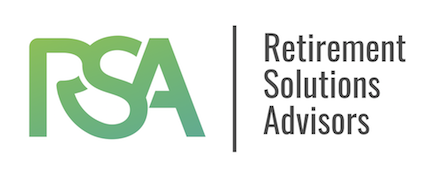FAQs
Frequently Asked QuestionsWhat is the difference between and a 401(k) and 403(b) Plan?
Non-profit organizations, governmental entities, and schools may sponsor a 403(b) Plan or a 401(k) Plan. Although a 403(b) Plan generally operates similarly to a 401(k) Plan there are important advantages offered by a 403(b) which may be important for a non-profit organization. RSA can help your organization determine which type of plan is the best fit for their organization’s employees.
What is a Safe Harbor Plan?
A safe harbor 401(k) Plan is not subject to certain annual nondiscrimination and top-heavy testing. The safe harbor contributions will usually be fully vested and must be made to all employees that are deferring into the plan and in some cases, to all eligible employees whether they are deferring or not. This will allow the employer and/or key employees to maximize their contributions to the plan without penalty.
When do I need to establish my plan?
Defined Contribution plans (i.e., 401(k), 403(b), Profit Sharing) and Defined Benefit plans (i.e., Cash Balance) must be established with a signed written document by the end of the company’s fiscal year to take advantage of contribution deductions during that year. This would be December 31st for a calendar year-end fiscal year.
A plan intending to be safe harbor must have been established at least three months before the end of the company’s fiscal year. This would be October 1st for a calendar year-end fiscal year.
How can RSA assist me to reduce my fiduciary liability?
Plan sponsors have a fiduciary responsibility to properly operate their employee’s retirement plan. RSA can work with you and your staff to ensure the operation of the plan is consistent with the plan documents and IRS/DOL requirements. RSA also teams with professional investment advisors who will work to properly select and monitor the investments owned by your plan.
How is the money contributed to the plan invested?
Investments for 401(k) Plans and other defined contribution plans are typically offered through a financial services or recordkeeping vendor who offer a wide variety of mutual funds and exchange-traded funds. Participants are permitted to select the investments for their accounts. RSA teams with professional investment advisors who will work to select and monitor the investments available for the participants.
Investments for Cash Balance and other defined benefit are typically managed by the plan trustee and the professional investment advisors appointed by the trustee. The money contributed to these plans is may be invested in a wide variety of investments including stocks, bonds, mutual funds, exchange-traded funds, and other investment products.
What is a Cash Balance Plan?
A defined benefit plan that defines the participant benefits as an account value is called a Cash Balance Plan. The account value is defined with pay credits (contributions to the cash balance account) and interest credits (earnings in the cash balance account) which will grow every year. Since it is a defined benefit plan, these benefits (account values) are outlined in the plan document and are not individually invested. The plan will have a trust that will be funded by the employer with assets that fund all the account balances for participants. The earnings in the trust greater than or less than the cash balance interest credit rate will adjust future contributions to the plan and not benefits due to participants.
What reports must be filed with the DOL and IRS?
Most plans subject to ERISA (Employee Retirement Income Security Act) must file an annual IRS Form 5500 and may have to file an annual IRS Form 8955-SSA. The deadline to file these forms is 7 months after the end of each plan year or 10.5 months after the end of each plan year with an extension. There are some exceptions to this.
What documents are required to establish a qualified plan?
Basic plan document, Summary plan description, Adoption agreement, Participant Loan Program (if applicable), IRS determination letter, ERISA Fidelity Bond, Participant Notices & Disclosures, QDRO Procedure, and Adopting Resolution.
Do I have to obtain a Fidelity Bond?
Yes: Section 412 of ERISA required that fiduciaries and other persons who handle or are responsible for the assets of a qualified plan must be bonded. The bond is to reimburse the plan if any plan assets are lost through the fraud or dishonesty of persons handling plan funds. Fraud or dishonesty includes such acts as theft, forgery, embezzlement, misappropriation, or willful misapplication of plan assets.
Who is a Plan Sponsor and a Plan Administrator? What is the difference between the two?
A Plan Sponsor is a designated party, usually a company or employer, that sets up the retirement plan for the benefit of the organization’s employees. A Plan Administrator is the person who is identified as having responsibility for running the plan. It could be the employer, a committee of employees, a company executive, or someone hired for that purpose.
What is a QDIA?
QDIA stands for “qualified default investment alternative” Under the Pension Protection Act (PPA) of 2006, fiduciary relief was provided for retirement plan sponsors who automatically place participants (who do not specifically choose other investments) into alternatives such as target-date or balanced fund investments. QDIAs are intended to help ensure those plan participants who may not be comfortable or knowledgeable about making investment decisions are invested in well-diversified investment portfolios with appropriate time horizons.
Get In Touch

420 WEST GRAND AVENUE, SUITE 1B
CHICAGO, IL 60654
CHICAGO, IL 60654
PHONE: (312) 527-2050
FAX: (877) 868-9015
Privacy Policy | Terms & Conditions | Feedback | Assessment
Copyright © 2018 Retirement Solutions Advisors LLC – All Rights Reserved


